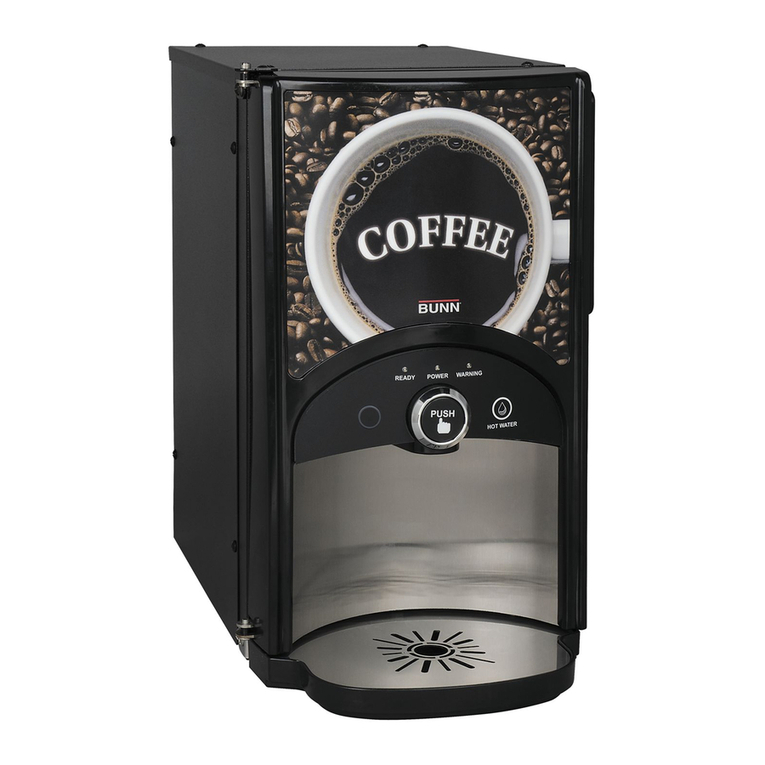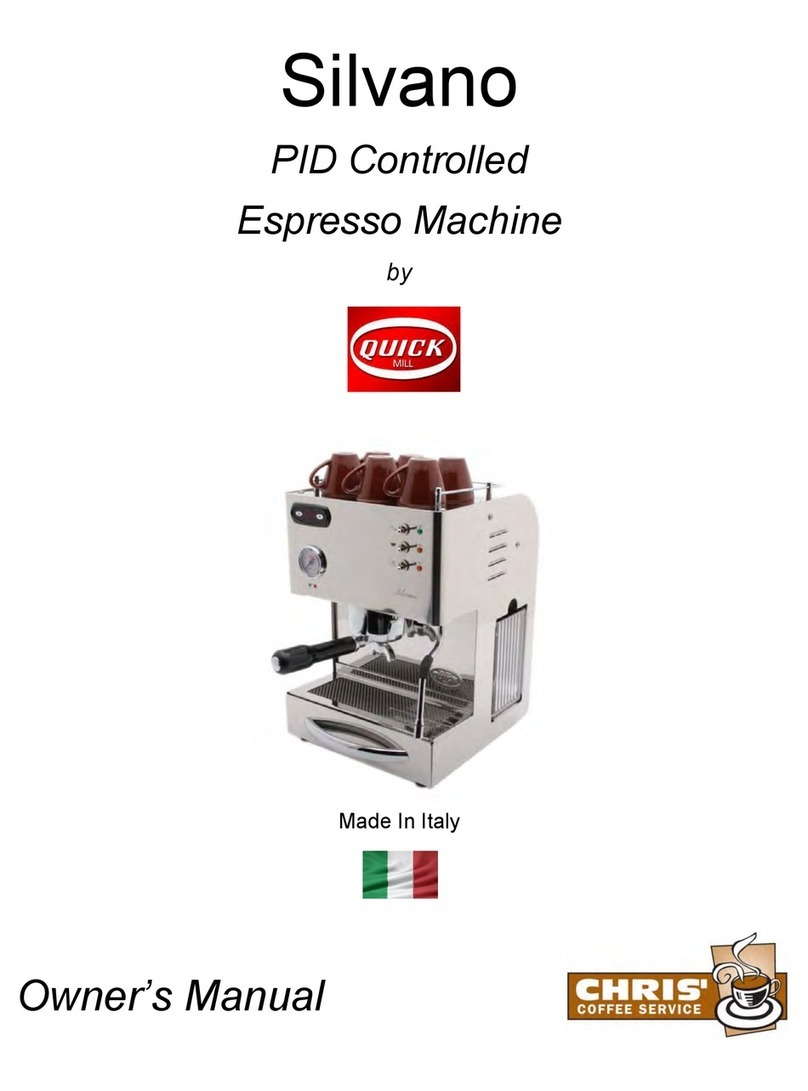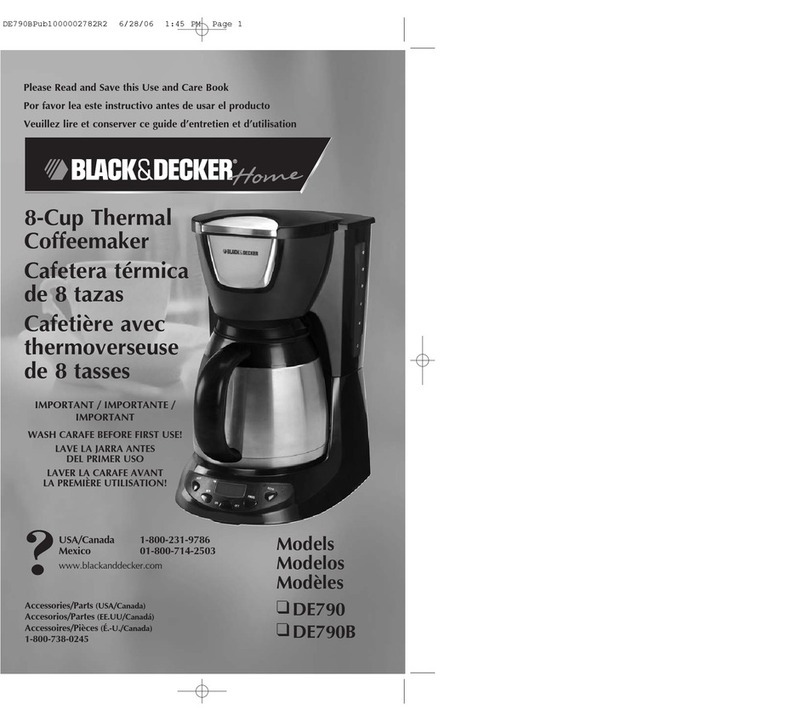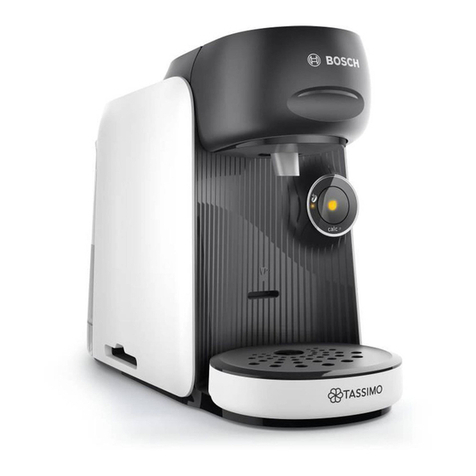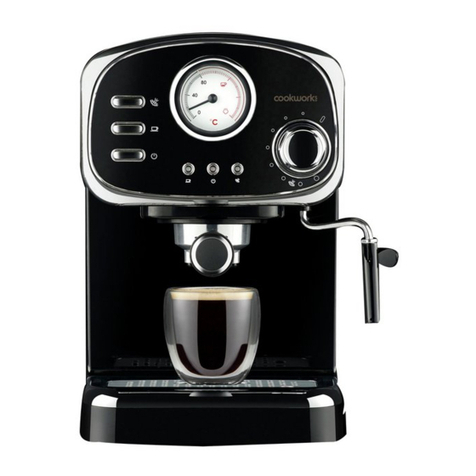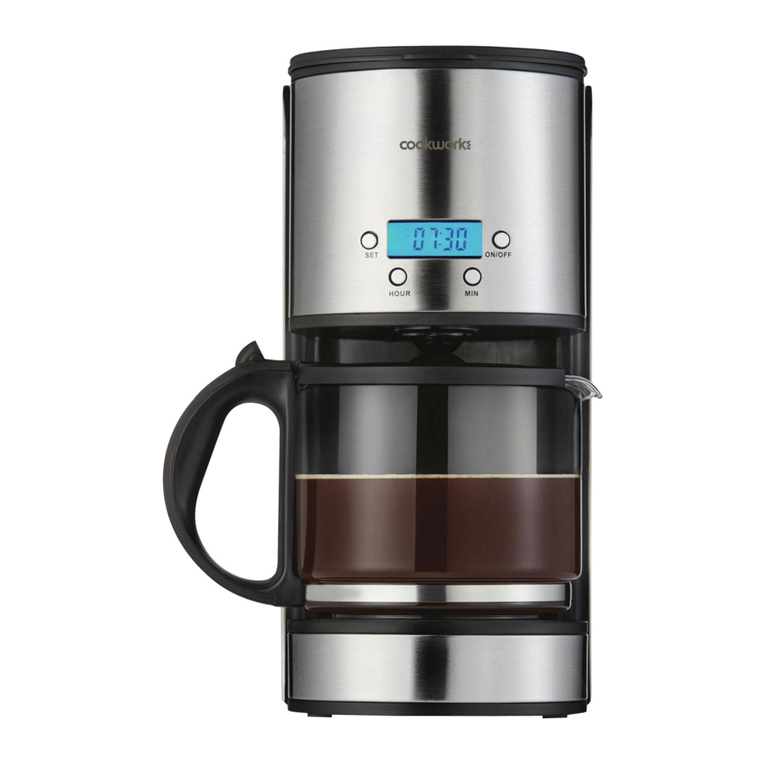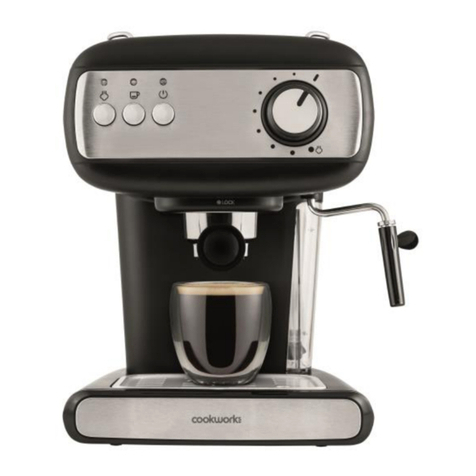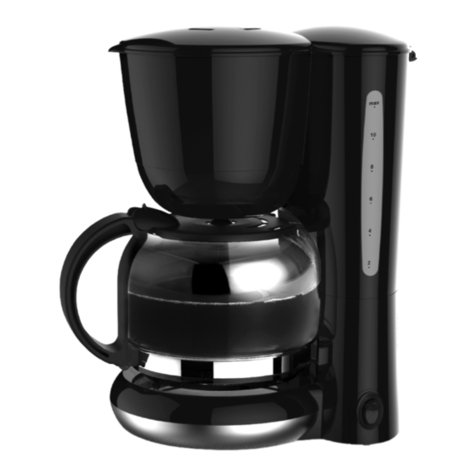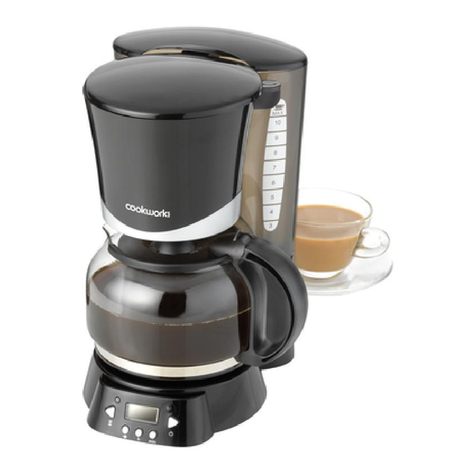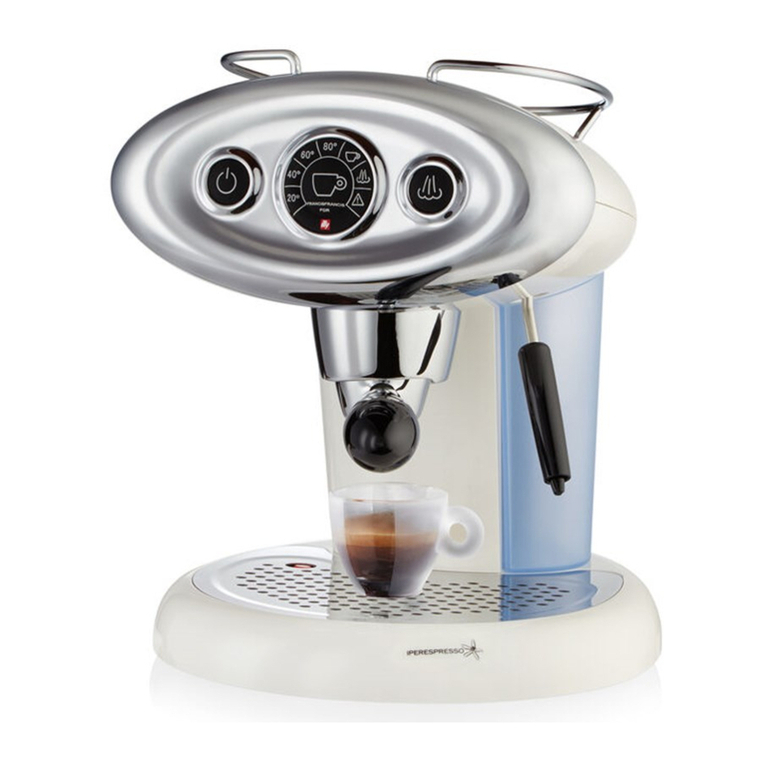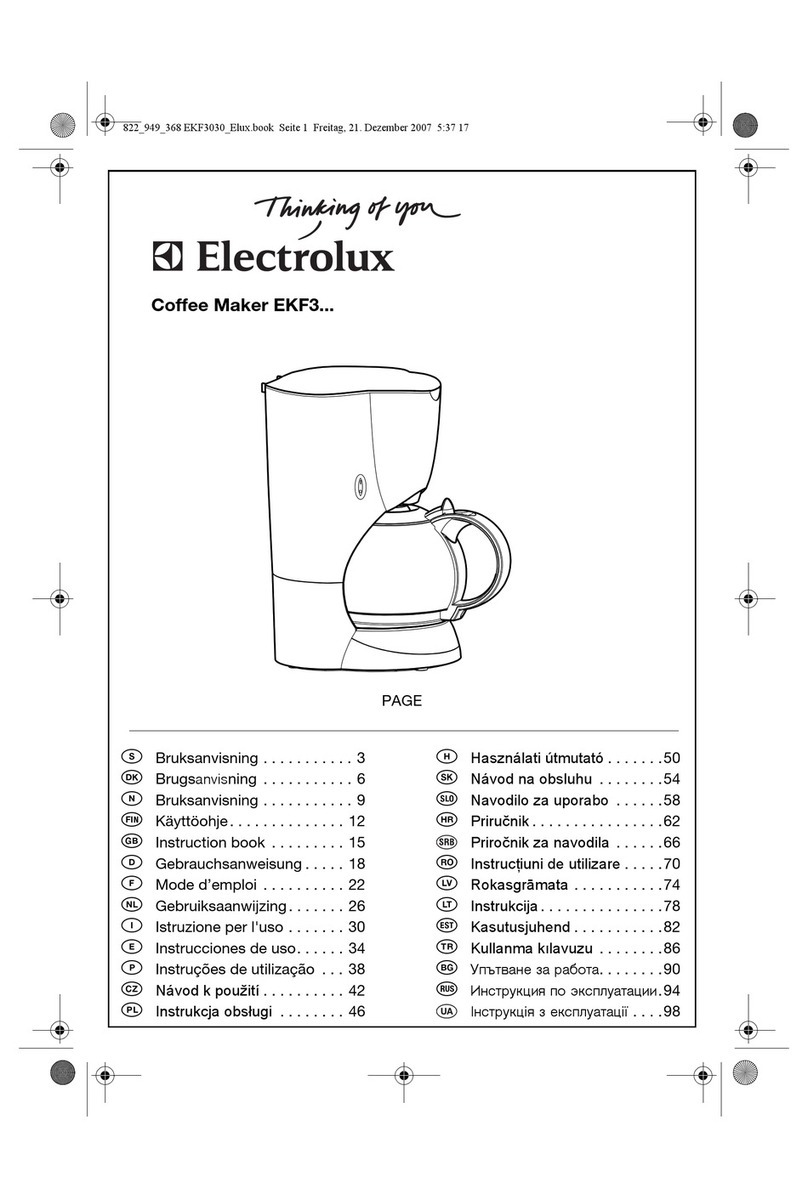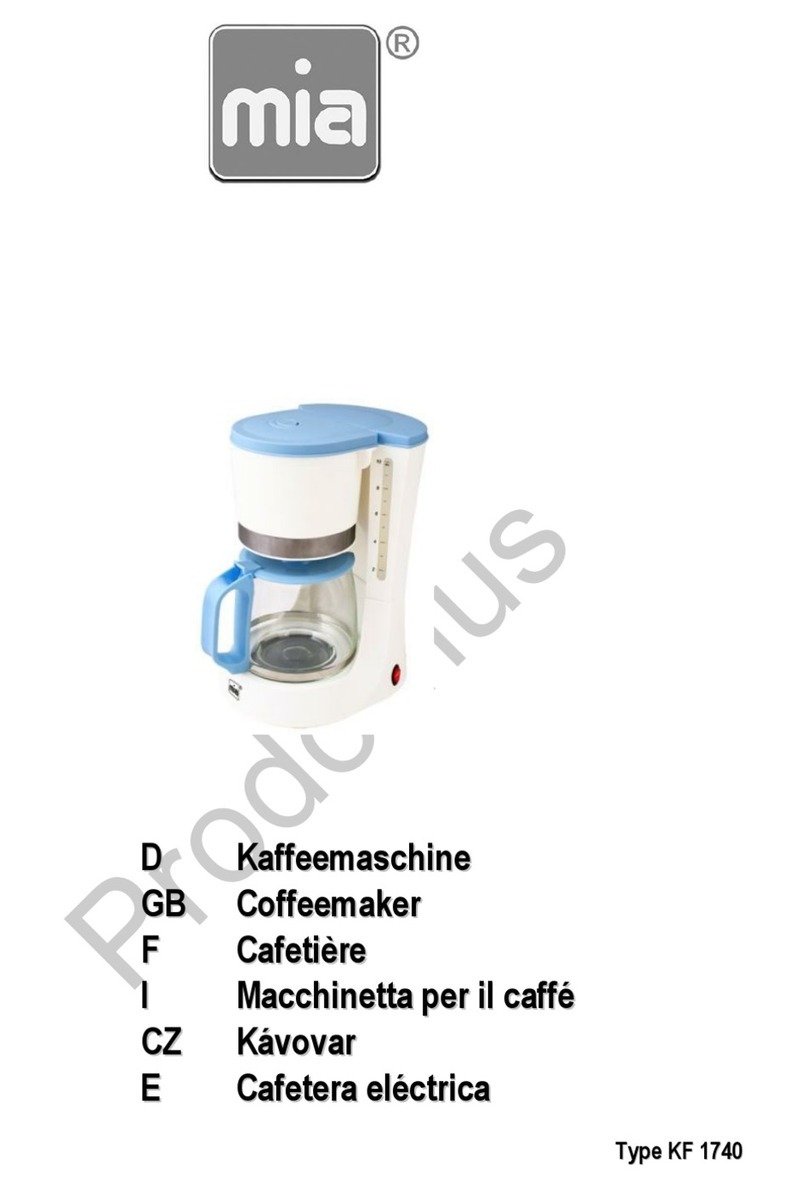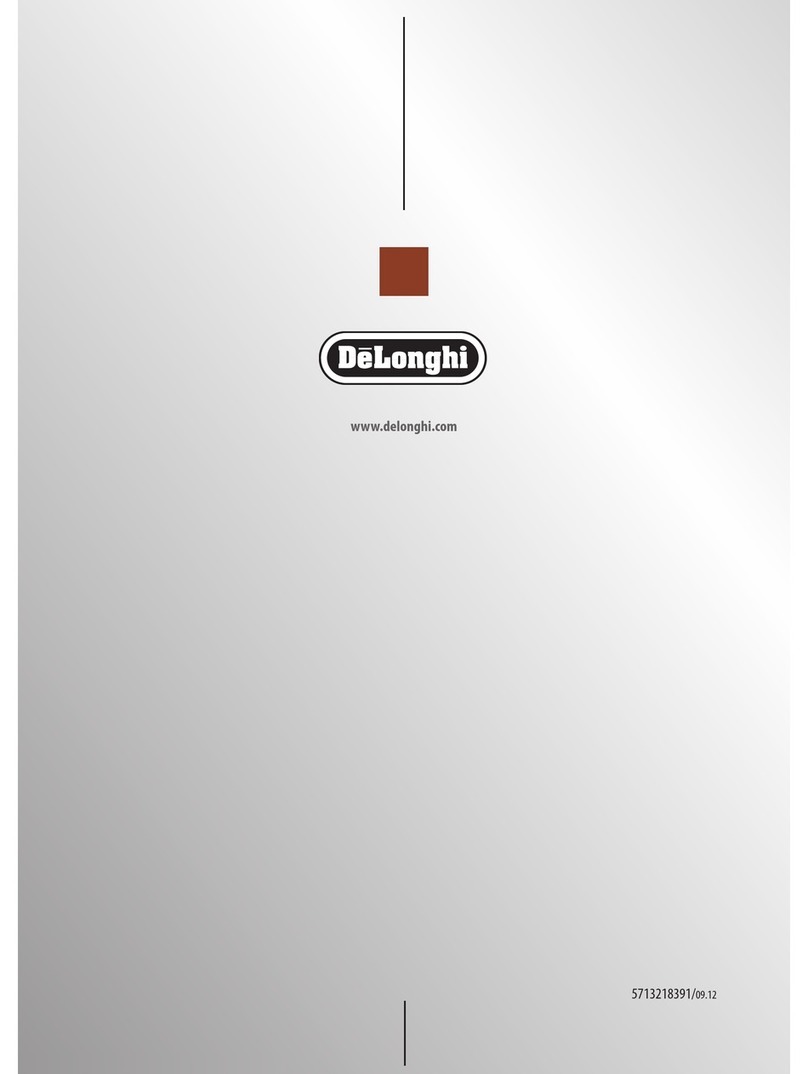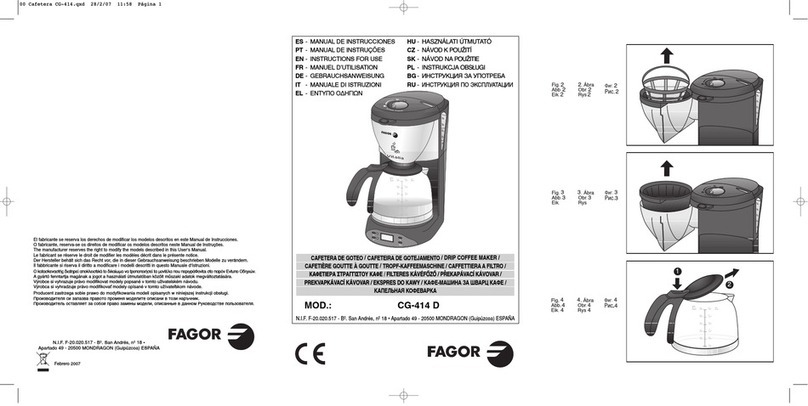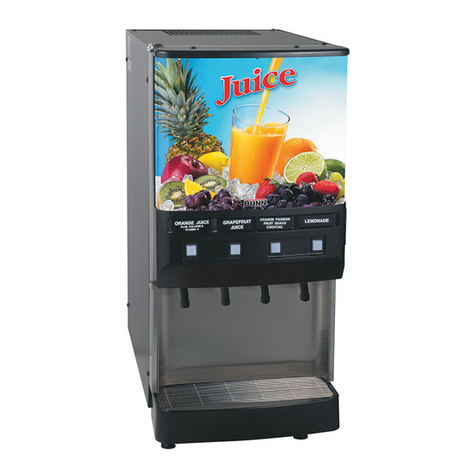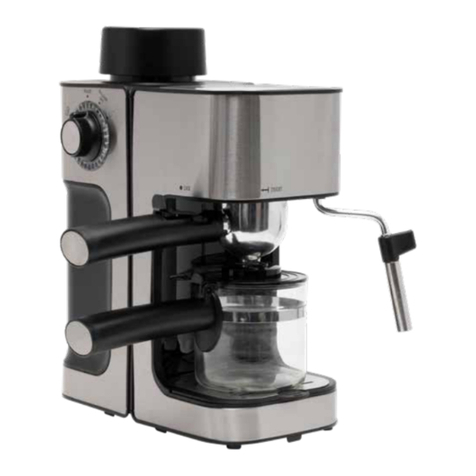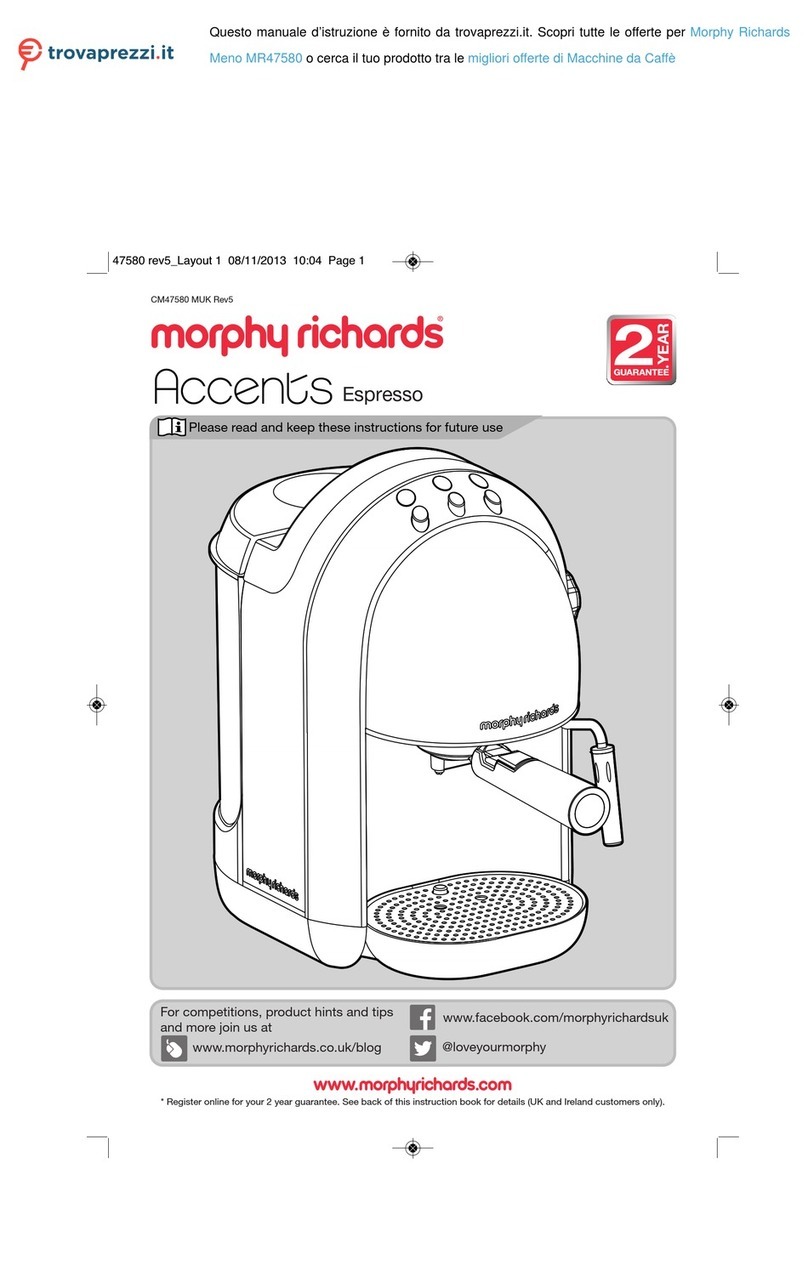
Issue 1 24/4/2020 8
11. Fully unwind the cable, plug in and switch on. For safety
do not allow the cable to dangle over the edge of units.
12. Switch the ON/OFF switch to the ON (I) position to turn the
machine on and the red power indicator will illuminate.
The appliance will start to heat up. Always wait for the
coffee / steam indicator to illuminate.
13. When the coffee / steam indicator illuminates (white) the
espresso machine is ready to operate.
14. Turn the control knob to the coffee ( ) position and then
allow the water to flow for one minute. A spluttering sound
maybe heard for a few seconds as the water purges the air
from the lines and the white indicator will flash.
15. Return the control knob to the ‘ ’ position to stop the flow
of liquid.
16. Discard the water remaining in the tank and in the jug.
17. The espresso machine in now ready for use.
TO USE –MAKING ESPRESSO
A hotter more flavoursome coffee will be achieved if the
espresso machine is pre-heated before making the first cup of
coffee.
1. To preheat the espresso machine, follow the ‘Preparation
for use’ directions on the previous page. Discard two
espresso cups of water.
2. When step 15 has been completed, remove the filter holder
and fill the filter with fresh ground coffee, packed lightly
using the tamper supplied. One spoonful of coffee is
usually sufficient for most people.
3. Remove any excess coffee from the rim of the filter holder
before refitting the filter holder to the espresso make as
before.
4. Place your espresso cup onto the cup shelf directly
underneath the brewing nozzles of the filter holder.
5. Turn the control knob to the coffee ( ) position and after
a short while the coffee will flow. During the brewing
process it is normal for the white indicator to flash.
